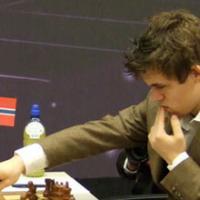
Initiative in Endgames
This article starts the series that will cover the topic of initiative in endgames. There are many definitions of what initiative is. In my own terms a player who has initiative usually dictates the play. He can create direct threats and puts the opponent on the defensive. To me initiative feels like inflicting one's own will on the opponent. It is like telling him: defend this defend that, and those threats do not necessarily have to be direct threats to his material. By threatening to occupy an open file can be as devastating as capturing a pawn. Sometimes there is a tipping point where one side loses initiative and the other one does not fail to capture it. Those are highly critical moments and in this series I will try to concentrate on these moments. We will explore the reasons why one loses the initiative and how it is possible to keep it. Initiative in modern practice is highly valued this is why I shall concentrate on games played recently. The few players that come to mind, who are extremely good at being active and creating threats in endgames are Carlsen, Nakamura and Kramnik. In today's article we will look how Carlsen at first had to defend for a long time but when time came he shot back and wasted no time in creating threats.
In this still middlegame position Bacrot has most of the pieces directed at white king. Naturally, he will choose a continuation that involves attacking motives. We can say that white has an initiative here. He will inflict his will on Carlsen at least for a while. Black has to make the most out of his initiative. It means that he has to transform it either in mating attack, material advantage or some kind of positional advantage. Speaking of positional advantage: black has two bishops but his pawn structure is inferior due to doubled c-pawns. In order to improve the position strategically black has to get rid of the doubled c-pawns. White will try to exchange black's pair of bishops. Let us see how these ideas collide in the game and who gets the most out of the position.
Carlsen managed to quench black's attack and at this point he should think what plan to choose. Black king no longer has dark-square bishop as his defender and the presence of the opposite colored bishos at the board make a case for white's attack. Carlsen places his pieces so they attack black king but keeps an eye on black's weakened pawns. Then he exchanges the bishop for the knight what even further messes up black's pawn structure. These minor improvements accumulate to an advantage.
Black c-pawns do not move, while white f and e-pawns can soon become passed pawns. Carlsen already has a small but solid advantage, whereas Bacrot does not have any active plan. Carlsen's king is cut off along the 2nd-rank but his rook and the knight are active. The most active plan involves going after the f-pawn and trying to promote the e-pawn. I am not sure what Carlsen did not like in that line but it looks very promising to me. Black would be too slow to counter this plan. Instead, Carlsen let Bacrot to get to the weak f3-pawn after which it was impossible to play for a win due to limited material present at the board.
Today we saw a game where evaluation did not swing that much. It was slightly better for black and then better for white but never decisive advantage. Bacrot had to rid of his doubled pawns and create a passed c-pawn but he concentrated on attack only and eventually it withered away leaving him with weak doubled c-pawns. Having initiative in endgame is challenging because of limited material: in the final position Carlsen could not squeeze much out of the position because with every exchange the game asymptote to equality. Carlsen also had to walk a thin line for a long time between equality and advantage. In the next articles we will explore more games to find out how to keep the initiative.






